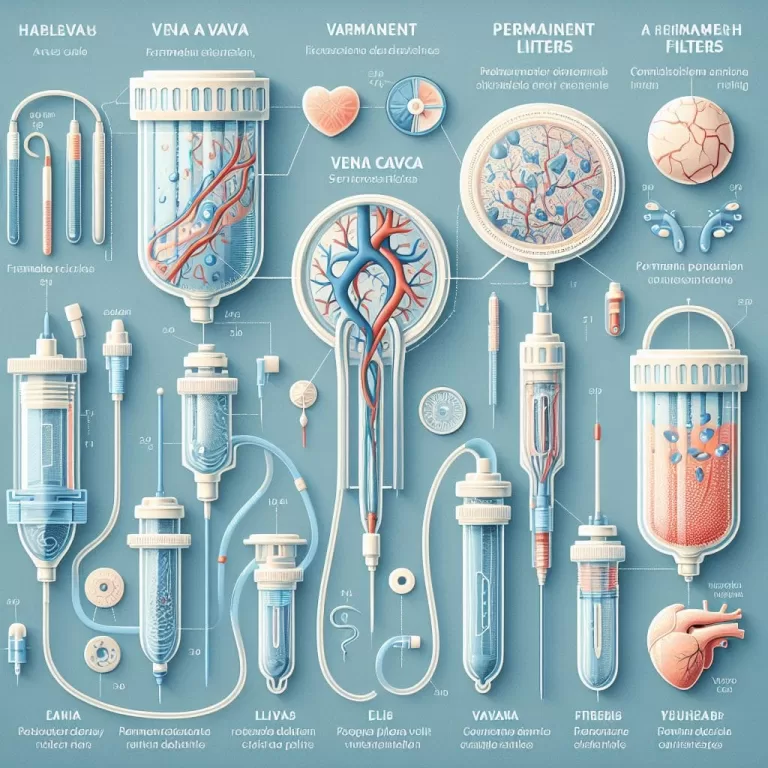Vena Cava Filters
**Vena Cava Filters**
Vena cava filters are medical devices used to prevent pulmonary embolism (PE) in patients at high risk. These filters are small, cage-like devices that are inserted into the inferior vena cava (IVC), the main vein that carries blood from the lower body to the heart. Vena cava filters work by trapping blood clots that may form in the legs or pelvis and preventing them from traveling to the lungs.
Vena cava filters are typically used in patients who are at high risk of PE, such as those who have had a deep vein thrombosis (DVT) or pulmonary embolism in the past, or those who are undergoing surgery or other medical procedures that increase their risk of developing a blood clot.
There are two main types of vena cava filters: permanent and retrievable. Permanent filters are designed to stay in place indefinitely, while retrievable filters can be removed once the risk of PE has passed.
The decision of whether to use a permanent or retrievable filter depends on several factors, including the patient’s overall health, risk of PE, and likelihood of needing the filter removed in the future.
Vena cava filters are generally safe and effective devices, but they can have some complications, such as bleeding, infection, and filter migration. Patients who have a vena cava filter should be monitored regularly to check for any complications.
Discover the Types of Vena Cava Filters: A Comprehensive Guide for Healthcare Professionals

Vena cava filters may prevent blood clots in your veins from reaching your lungs. They may be permanent, long-term solutions or temporary screens that may be removed after a few weeks or months. The vena cava is the large vein…
